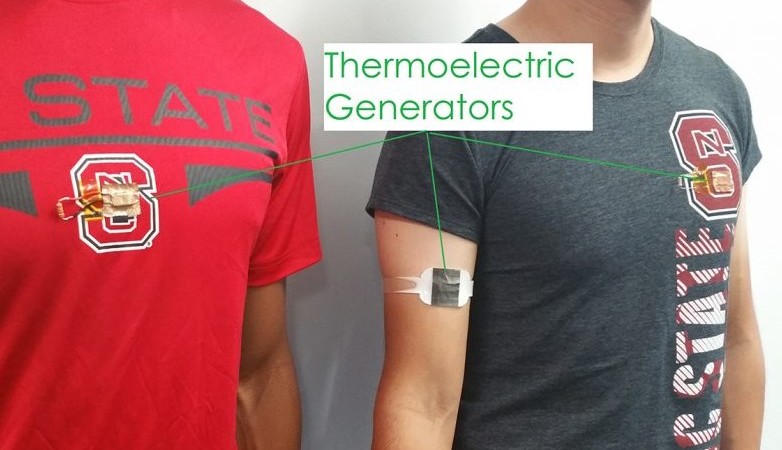Thermoelectric generator powers IoT apps
October 12, 2016
on
on

Power supply is often one of the biggest hurdles for IoT devices. Researchers at North Carolina State University (USA) have developed a thermoelectric generator that can provide enough power for wearable electronic devices. The prototypes are extremely lightweight and easily adapt to the shape of the user’s body.
A wearable thermoelectric generator exploits the temperature difference between the user’s body and the surroundings to generate electricity. Previous versions could only supply a few microwatts per square centimeter, or they used relatively large, stiff heat sinks. The new technology can generate up to 20 µW per square centimeter and does not need a heat sink, making it light and comfortable.
The new design has a layer of thermally conductive material next to the user’s body that absorbs heat from the body. It is covered by a polymer layer that prevents dissipation of the heat into the surrounding air. The absorbed heat is fed to a centrally located thermoelectric generator with an areas of 1 square centimeter, where it is converted into electricity. Residual heat is quickly dissipated to the air through a second thermally conductive layer. The entire arrangement is just 2 mm thick and is very flexible.
A wearable thermoelectric generator exploits the temperature difference between the user’s body and the surroundings to generate electricity. Previous versions could only supply a few microwatts per square centimeter, or they used relatively large, stiff heat sinks. The new technology can generate up to 20 µW per square centimeter and does not need a heat sink, making it light and comfortable.
The new design has a layer of thermally conductive material next to the user’s body that absorbs heat from the body. It is covered by a polymer layer that prevents dissipation of the heat into the surrounding air. The absorbed heat is fed to a centrally located thermoelectric generator with an areas of 1 square centimeter, where it is converted into electricity. Residual heat is quickly dissipated to the air through a second thermally conductive layer. The entire arrangement is just 2 mm thick and is very flexible.
Read full article
Hide full article



Discussion (0 comments)